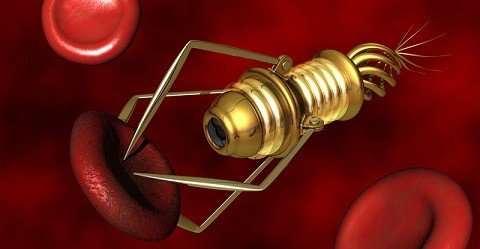Can We Actually Bring People Back To Life? Cryonics Could Be The Answer
There has been an Idea that has been around for long, and this is: “Can you take a dying person, freeze them. And then in the future (maybe after thousands of years), thaw them and introduce them to the technology of the future; or maybe a robot butler?”
Well, if you’re thinking what I’m thinking, then I introduce you to the technology of Cryonics.
In a layman’s term, Cryonics is the process of preserving or hibernating people at extremely low temperature, so that they can be resuscitated in the future.
Survey of Cryonic
As we may have known, the idea of cryonics began around 1962. And the earliest mention of it was in the book of Dr Robert Ettinger; “the prospect of immortality”. In his exact words, he quipped:
Freezing people can preserve them so that future, and more advanced medical technology can revive them – Dr Robert Ettinger
But, cryonics works on the basis that the person isn’t presumably dead until the information in the brain becomes lost (brain dead). That means, the idea of cryonics is this:
If you can preserve the mind, then you can certainly preserve the body (person).
This is because; the body could be fixed somewhere in the future when the technology has advanced to that level.
But for cryonics to effectively work, there are two problems that should be solved first
- For you to successfully cure someone that has been preserved, you definitely have to also cure the effects of the preservation.
- Secondly, you will have to cure what killed them.
Sounds easy right?
Well, let’s take the first point
1. Curing the effect of the preservation
The process of preserving people in a way that it won’t cause too much damage is the key. There have been some advances in this area. Cryonics expert have come up with some ideas.
In preservation, reduce their temperature to -320 degrees Fahrenheit with liquid Nitrogen, in a process called “Vitrification”
This is the same Vitrification process that is used to preserve embryos for future IVF. But it is easier to preserve and revive embryo that an entire human body.
In the process of cooling, it can take a while, which also gives room for some cells to degenerate. That is why it was proposed that, the brain should be exteriorized and preserved first, before the whole body is preserved. And yeey!!, medical advancement could get to a point where the brain can even be revived and attached to something else instead of the human body (maybe a droid, or even uploaded to a computer system).
Also, freezing someone would cause ice crystals to form in the person’s body, which damages the blood vessels, and dehydrates cells. That is why the blood will be totally removed before freezing, and replace with “cryopreservants”
In 2009, a rabbit kidney was successfully thawed after it was preserved for decades. Now, this is a milestone achievement in the right direction. The kidney was transplanted into a rabbit, and it worked perfectly well (this research was done by a team of researchers called “the 21st century medicine”).
Will this technique work on the human brain? The brain, no doubt is very complicated in structure. Scientists don’t actually know how much of a person’s consciousness is preserved in the brain once the person dies, but experts have said the memories stick around after cryonic preservation.
Here’s a proof to this:
In 2015, a nematode worm that was trained to respond to certain smell; prior to cryonic preservation, was also seen to retain the ability after it was revived. That means, memory is not mutilated on cryonic preservation.
2. Curing what killed them
There are always new treatments and cures being develop every day. And it will be myopic to think that the future will not present us with the cure to; at least, few of the diseases that kill people in the 21st century.
What we may consider as fatal now, could become a cheap walkover in the future. So, reviving them in the future has ultimately increased their chances of getting cured.
After you may have thawed the preserved human in the future, there is some possibility of complications arising, judging by the fact that the cryopreservants is actually toxic. So what’s the solution? Well, this is where the “nanobot” come into play.
These bots can go right into the bloodstream to detoxify the blood vessels from the effect of the cryopreservants.
Though this tech is still emerging, but the future is closer than we think.
Thank you for reading
Reference 1
Reference 2
Reference 3
Reference 4
gif by @foundation





Very interesting topic, I wonder how far the technology has to be developed in order to have real trials, maybe on mice... Science and technology have come a far ways in the last few decades, I am hearing about some great biotech projects and technologies that are coming in the near future. One in particular, is a device that can easily sense what type of disease a person has. Mind you, I follow the medical cannabis sector and sometimes all this biotech is can't compete with natures medicine.
Congratulations @esteemguy! You have completed some achievement on Steemit and have been rewarded with new badge(s) :
Click on any badge to view your own Board of Honor on SteemitBoard.
For more information about SteemitBoard, click here
If you no longer want to receive notifications, reply to this comment with the word
STOPHello my name is @eduardoff, I am new to this channel, I invite you to follow me in this community and generate a good friendship, see you soon